Your first step is to convert this entire problem into a per-unit system. This is exactly what the question you've linked to has indicated. When using a per-unit system, a transformer can be accurately modelled as an additional series reactance.
Firstly, we can arbitrarily choose \$S_{BASE} = 100 MVA\$. Does it need to be 100 MVA? No. It can be whatever we want but I like 100 MVA.
Following that, when you set up a per-unit system on a power system with transformers, the base voltage changes with respect to the transformers' turn ratio. In your above question, we can choose 18 kV to be the \$V_{BASE}\$ for BUS-2. This, in turn, means that:
BUS-2 \$V_{BASE-2} = 18 kV \$ we got to pick this oneBUS-7 \$V_{BASE-7} = \frac{230}{18} \times V_{BASE-2} = 230 kV\$ BUS-1 \$V_{BASE-1} = 16.5 kV \$ this is calculated the same way as aboveBUS-3 \$V_{BASE-3} = 13.8 kV\$ this is calculated the same way as two above
The magic of a per-unit system is now that the primary side of the transformer is with respect to the primary voltage and the secondary side is with respect to the secondary voltage the transformer can be replaced with a reactance. Your question indicates that T1 = 5.76 %X, T2 = 6.25 %X, and T3 = 5.86 %X. Usually, I would find the new per-unit reactance by using:
$$X_{T1, pu} = 0.0576 \times \frac{S_{BASE}}{S} $$
but you haven't provided the MVA rating of the transformers. Luckily, this is a well-known problem and we can find that T1 = 77 MVA, T2 = 163 MVA, and T3 = 86 MVA.
$$ X_{T1,pu} = 0.0576 \times \frac{100}{77} = 0.0748 $$
$$ X_{T2,pu} = 0.0625 \times \frac{100}{163} = 0.0383 $$
$$ X_{T3,pu} = 0.0586 \times \frac{100}{86} = 0.0681 $$
Voila! Your vertical squiggly lines can now be drawn and horizontal squiggly lines.
